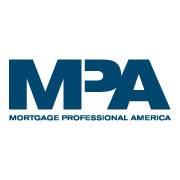More Latino representation in mortgages: Good for the country, great for business
Mortgage providers concerned about profits can look to NAHREP’s Top 250 Awards for guidance to success, as explained in this Mortgage Professional America interview with Co-Founder & CEO Gary Acosta.
By Clayton Jarvis
June 18, 2020
Creating lasting social change in a capitalist society requires more than commitment and good intentions. Not everyone can relate to the complex, systemic circumstances that fuel a struggle for acceptance or equality, but a loss of income? That’s something that gets everyone’s attention.
Rather than urging mortgage providers to become more diverse on purely moral grounds, Gary Acosta, co-founder and CEO of the National Association of Hispanic Real Estate Professionals, appeals to their fear of losing market share. It’s an approach some may see as cynical; others may see in it a strain of the same money-talks practicality that brought Apartheid to an end in South Africa through a series of crushing, game-changing boycotts.
“If we’re expecting the industry to change because it’s the right thing to do, it’s going to change very slowly,” Acosta says. “But as you see certain companies grow market share and achieve more profitability because they made the strategic effort to diversify their workforce, you’re going to see more companies follow in that regard because that’s where the money is, that’s where the growth is.”
One of the largest groups making up America’s population of first-time home buyers is Hispanics, who Acosta says will dominate the first-timer market for at least the next decade. He says that old-school behemoths like Wells Fargo have recognized the market opportunity and are already diversifying their workforces in preparation. Smaller independent companies like New American Funding and Alterra are also making positive moves. The result has been an increase in market share.
“The only reason they’re outperforming the marketplace is because they’ve diversified their workforce,” Acosta says.
A diverse workforce means more minority home ownership
An added benefit of a diversified workforce is more effectively meeting the needs of minorities, whose cultural idiosyncrasies and credit situations are often ignored when dealing with white loan officers.
“Somebody who is knowledgeable about you and your culture is going to be more effective,” Acosta says.
For companies hoping to serve Hispanic clients, Acosta says they need to display a level of cultural awareness that demonstrates a respect for the group’s unique needs. Hispanics are generally family-oriented, so a lender will want to create an environment that respects their desire for togetherness and cooperation. Hispanic families also regularly pool their resources when they buy a home for the first time, so loan officers must be prepared to deal with non-occupant co-borrowers.
“It’s good to have the products that can accommodate that [situation], and it’s good to have the staff that understands how to underwrite those types of loans effectively,” he says.
But truly committing to servicing the Hispanic market means hiring more Hispanics.
“My son asked me one time, ‘Do I have to be seven-feet tall to play in the NBA?’ And I said, ‘No, but it helps.’ I say the same thing to people who say, ‘Do you have to be Hispanic to serve the Hispanic marketplace effectively?’”
To raise awareness of the opportunities awaiting Hispanics in the real estate space, Acosta and the National Association of Hispanic Real Estate Professionals run annual Top 250 lists for both real estate agents and mortgage originators. The lists have proven wildly popular, generating thousands of nominations each year. Acosta hopes that by witnessing people with a similar cultural background succeed in an industry that has been dominated by whites for as long as it has existed, more and more Hispanics will be drawn to careers in real estate.
“If I had a silver bullet that could change things for the better, it would be to have more Latinos, or people with cultural skillsets, in the industry performing well,” he says. “We think creating role models is one of the ways to inspire people to want to get into the industry, and to inspire those that are in the industry to achieve even more.”

